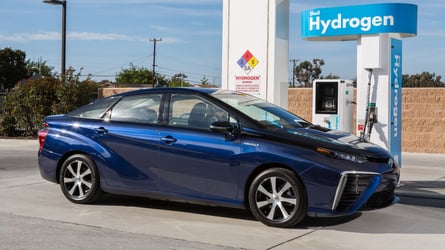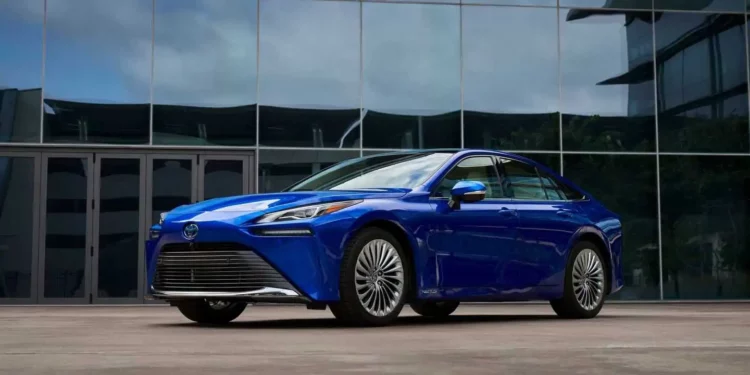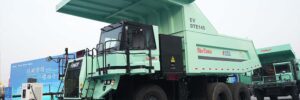Shell Hydrogen will permanently close all seven of its California pumping stations immediately, the company confirmed this week. It will no longer operate light-duty hydrogen stations in the U.S., and represents another blow to the struggling hydrogen car market in the only state where the fuel is widely available at all.
The outlet Hydrogen Insight first reported the news on Thursday. Shell had, until recently, operated seven of the 55 total retail hydrogen stations in California, per the Hydrogen Fuel Cell Partnership (H2FCP). That makes this a blow, but not apocalyptic news for the (small) hydrogen community.
Get Fully Charged
Hydrogen Is Stalling Out
Car manufacturers and gas giants alike have long promoted hydrogen fuel-cell vehicles as an alternative to battery electric vehicles. The technology is promising for commercial trucking and heavy-duty applications, but the light-duty market has failed to materialize in the United States.
Unfortunately, the reason why Shell is closing up shop should give Toyota Mirai, Hyundai Nexo, and Honda Clarity Fuel Cell owners—God bless ’em—even more cause for concern. In the letter announcing the closure, Shell Hydrogen Vice President Andrew Beard said they were shutting them down “due to hydrogen supply complications and other external market factors.” It’s not hard to see what Beard is referencing here.


The second-generation Mirai looks great. But unless you live in Southern California or the Bay Area, you won’t be able to buy fuel for it.
A brief scan of H2FCP’s fantastic station map shows that a majority of the Hydrogen stations in Southern California are offline or operating with reduced hours. Hydrogen Insight reports that this shortage has been disrupting stations since August 13. During my one experience in a Mirai, the Uber driver behind the wheel noted that it had become even more of a nightmare to find fuel, and the situation has gotten worse since then. Each station has a slightly different notice posted on H2FCP’s map, but this one from an Iwatani hydrogen filling station captures the spirit of them all:
“Our primary hydrogen supplier has experienced a disruption that will impact our access to hydrogen for the Hawaiian Gardens station. We currently do not have an ETA to return to normal service levels and will provide updates as soon as we have more information. We greatly appreciate your patience for the additional downtime this will cause.”
Some are also down for repairs, as many hydrogen stations suffer from serious reliability issues. Iwatani, a Japanese gas company that is one of the two largest names in American hydrogen filling stations, is currently suing the company that provided the core technology for its stations. In a court filing viewed by Hydrogen Insight, Iwatini alleges that its provider did not test its equipment in a real-world commercial scenario, hid defects, and misled the company. It is, in short, a big mess.


The Honda FCX Clarity was the first production hydrogen fuel-cell vehicle to reach the U.S., way back in 2008. A decade and a half later, most Americans still aren’t familiar with hydrogen cars.
All of this makes the future of hydrogen fuel-cell vehicles in the United States even more uncertain. The technology has struggled to catch on, as the stations and their fuel remain expensive. Though hydrogen car manufacturers usually include a large amount of free fuel in the purchase of a vehicle, once that runs out consumers are left with eye-watering prices from stations that are often broken, out of fuel, or swarmed with long lines. It’s why used hydrogen cars are so cheap, and why they still aren’t a good deal.
Few companies can make a better case for it than Shell, though, as the cheapest way to produce hydrogen involves a lot of natural gas. Its proximity to the fossil-fuel industry was supposed to make it cheaper, and provide incentive for robust fueling infrastructure. That hasn’t played out, though, and one of the largest oil giants is throwing in the towel. If even a fossil giant like Shell can’t justify investing in the future of light-duty hydrogen infrastructure, we’re not sure who can.










